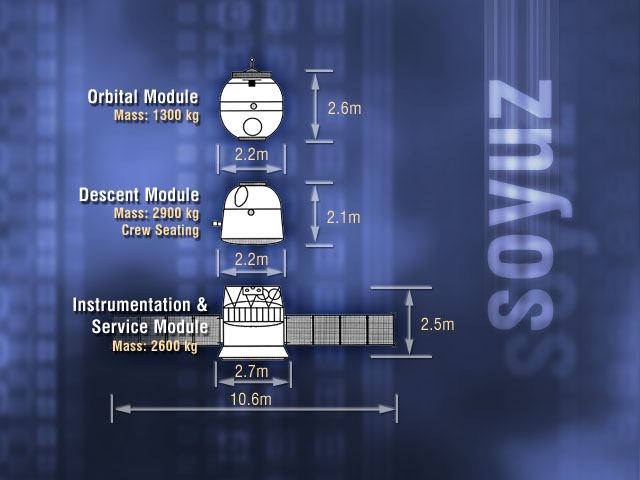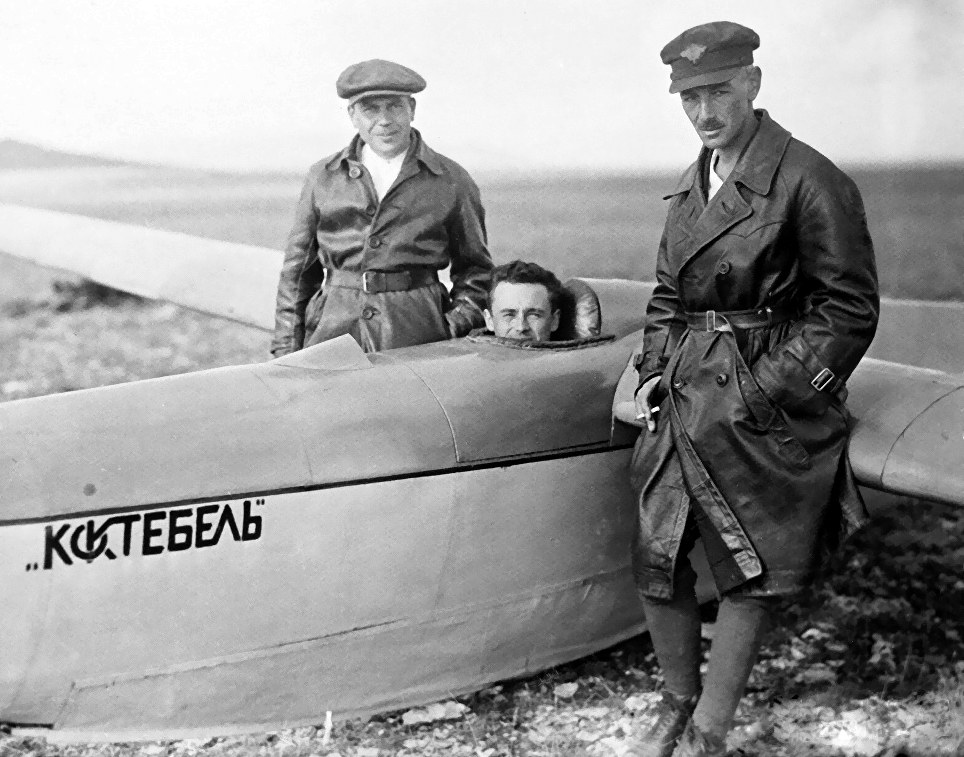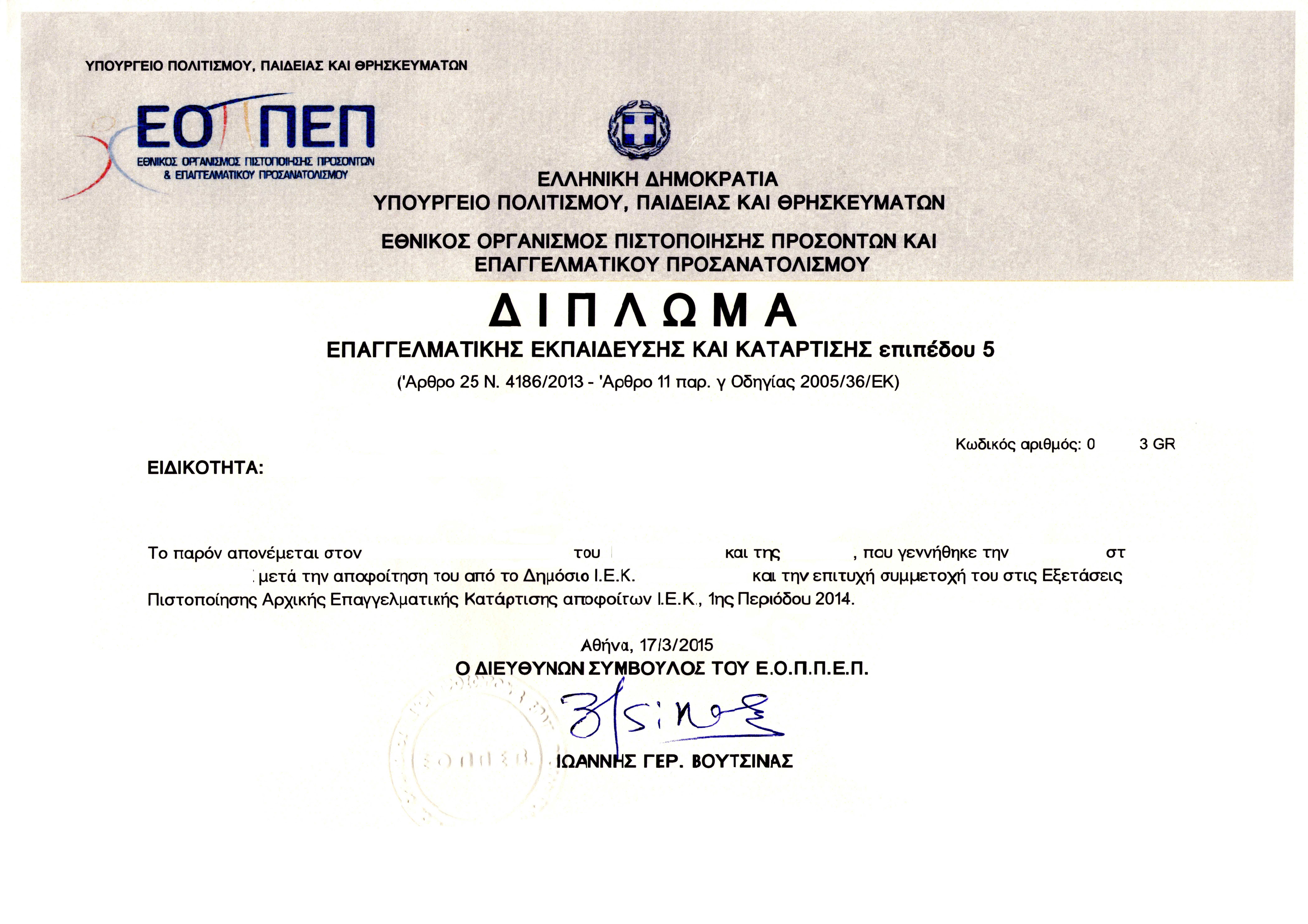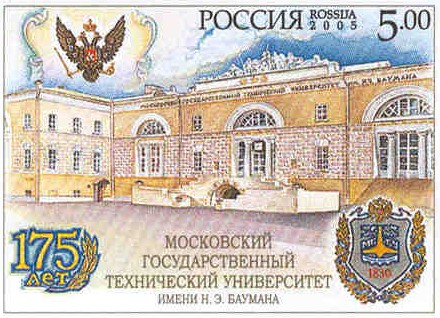|
Gennady Strekalov
Gennady Mikhailovich Strekalov (; 26 October 1940 – 25 December 2004) was an engineer, cosmonaut, and administrator at Russian aerospace firm RSC Energia. He flew into space five times and lived aboard the Salyut 6, Salyut 7, and Mir space stations, spending over 268 days in space. The catastrophic explosion of a Soyuz rocket in 1983 led to him being one of only four people to use a launch escape system. He was decorated twice as Hero of the Soviet Union and received the Ashoka Chakra from India. Personal life Strekalov was born on 26 October 1940 in Mytishchi near Moscow, the son of Mikhail Strekalov and his wife Praskoyva. Mikhail Strekalov was killed in 1945 while fighting for the Red Army in Poland. Gennadi Strekalov graduated from N. E. Bauman Moscow Higher Technical School in 1965 with an engineer's diploma. He married Lydia Anatolievna Telezhina; the couple had two daughters, Tatiana and Natalia. He died in Moscow on 25 December 2004, from cancer, aged 64. Career ... [...More Info...] [...Related Items...] OR: [Wikipedia] [Google] [Baidu] |
Roscosmos
The State Corporation for Space Activities "Roscosmos", commonly known simply as Roscosmos (), is a State corporation (Russia), state corporation of the Russian Federation responsible for space science, space flights, List of space agencies, cosmonautics programs, and aerospace research. Originating from the Soviet space program founded in the 1950s, Roscosmos emerged following the dissolution of the Soviet Union in 1991. It initially began as the Russian Space Agency,, ''Rossiyskoye kosmicheskoye agentstvo'', or RKA (). which was established on 25 February 1992 and restructured in 1999 and 2004 as the Russian Aviation and Space Agency, ''Rossiyskoye aviatsionno-kosmicheskoye agentstvo'', commonly known as (), established on 25 May 1999. and the Federal Space Agency (Roscosmos), (Роскосмос), ''Federalnoye kosmicheskoye agentstvo (Roskosmos)''. respectively. In 2015, the Federal Space Agency (Roscosmos) was merged with the United Rocket and Space Corporation, ... [...More Info...] [...Related Items...] OR: [Wikipedia] [Google] [Baidu] |
Salyut 7
Salyut 7 (), also known as DOS-6 (Durable Orbital Station 6) was a space station in low Earth orbit from April 1982 to February 1991. It was first crewed in May 1982 with two crew via Soyuz T-5, and last visited in June 1986, by Soyuz T-15. Various crew and modules were used over its lifetime, including 12 crewed and 15 uncrewed launches in total. Supporting spacecraft included the Soyuz T, Progress (spacecraft), Progress, and TKS (spacecraft), TKS spacecraft. It was part of the Soviet Salyut programme, and launched on 19 April 1982 on a Proton (rocket), Proton-K rocket from Baikonur Cosmodrome Site 200, Site 200/40 at the Baikonur Cosmodrome in the Soviet Union. Salyut 7 was part of the transition from monolithic to modular space stations, acting as a testbed for docking of additional modules and expanded station operations. It was the eighth space station of any kind launched. Salyut 7 was the last of both the second generation of DOS-series space stations and of the monolith ... [...More Info...] [...Related Items...] OR: [Wikipedia] [Google] [Baidu] |
Flight Engineer
A flight engineer (FE), also sometimes called an air engineer, is a member of an aircraft's flight crew who is responsible for monitoring and operating its complex aircraft systems. In the early era of aviation, the position was sometimes referred to as the "air mechanic". Flight engineers can still be found on some larger Fixed-wing aircraft, fixed-wing airplanes and helicopters. A similar crew position exists on some spacecraft. In most modern aircraft, their complex systems are both monitored and adjusted by electronic microprocessors and computers, resulting in the elimination of the flight engineer's position. In earlier days, most larger aircraft were designed and built with a flight engineer's position. For U.S. civilian aircraft that require a flight engineer as part of the crew, the flight engineer must possess an FAA Flight Engineer Certificate with reciprocating, turboprop, or turbojet ratings appropriate to the aircraft. Whereas the four-engine Douglas DC-4 did not re ... [...More Info...] [...Related Items...] OR: [Wikipedia] [Google] [Baidu] |
Soyuz Spacecraft
Soyuz () is a series of spacecraft which has been in service since the 1960s, having made more than 140 flights. It was designed for the Soviet space program by the Korolev Design Bureau (now Energia). The Soyuz succeeded the Voskhod spacecraft and was originally built as part of the Soviet crewed lunar programs. It is launched atop the similarly named Soyuz rocket from the Baikonur Cosmodrome in Kazakhstan. Following the Soviet Union's dissolution, Roscosmos, the Russian space agency, continued to develop and utilize the Soyuz. Between the Space Shuttle's 2011 retirement and the SpaceX Crew Dragon's 2020 debut, Soyuz was the sole means of crewed transportation to and from the International Space Station, a role it continues to fulfill. The Soyuz design has also influenced other spacecraft, including China's Shenzhou and Russia's Progress cargo vehicle. The Soyuz is a single-use spacecraft composed of three main sections. The descent module is where cosmonauts are seated f ... [...More Info...] [...Related Items...] OR: [Wikipedia] [Google] [Baidu] |
Soyuz Program
The Soyuz programme ( , ; , meaning "Union") is a human spaceflight programme initiated by the Soviet Union in the early 1960s. The Soyuz spacecraft was originally part of a Moon landing project intended to put a Soviet astronaut, cosmonaut on the Moon. It was the third Soviet human spaceflight programme after the Vostok programme, Vostok (1961–1963) and Voskhod programme, Voskhod (1964–1965) programmes. The programme consists of the Soyuz (spacecraft), Soyuz capsule and the Soyuz (rocket family), Soyuz rocket and is now the responsibility of Roscosmos. After the retirement of the Space Shuttle in 2011, the Soyuz was the only way for humans to get to the International Space Station (ISS) until 30 May 2020 when Crew Dragon flew to the ISS for the first time with astronauts. Soyuz rocket The launch vehicles used in the Soyuz expendable launch system are manufactured at the Progress State Research and Production Rocket Space Center (TsSKB-Progress) in Samara, Russia. As w ... [...More Info...] [...Related Items...] OR: [Wikipedia] [Google] [Baidu] |
Russian Academy Of Sciences
The Russian Academy of Sciences (RAS; ''Rossíyskaya akadémiya naúk'') consists of the national academy of Russia; a network of scientific research institutes from across the Russian Federation; and additional scientific and social units such as libraries, publishing units, and hospitals. Peter the Great established the academy (then the St. Petersburg Academy of Sciences) in 1724 with guidance from Gottfried Wilhelm Leibniz, Gottfried Leibniz. From its establishment, the academy benefitted from a slate of foreign scholars as professors; the academy then gained its first clear set of goals from the 1747 Charter. The academy functioned as a university and research center throughout the mid-18th century until the university was dissolved, leaving research as the main pillar of the institution. The rest of the 18th century continuing on through the 19th century consisted of many published academic works from Academy scholars and a few Academy name changes, ending as The Imperial ... [...More Info...] [...Related Items...] OR: [Wikipedia] [Google] [Baidu] |
Sputnik 1
Sputnik 1 (, , ''Satellite 1''), sometimes referred to as simply Sputnik, was the first artificial Earth satellite. It was launched into an elliptical low Earth orbit by the Soviet Union on 4 October 1957 as part of the Soviet space program. It sent a radio signal back to Earth for three weeks before its three silver-zinc batteries became depleted. Aerodynamic drag caused it to fall back into the atmosphere on 4 January 1958. It was a polished metal sphere in diameter with four external radio antennas to broadcast radio pulses. Its radio signal was easily detectable by amateur radio operators, and the 65° orbital inclination made its flight path cover virtually the entire inhabited Earth. The satellite's success was unanticipated by the United States. This precipitated the American Sputnik crisis and triggered the Space Race. The launch was the beginning of a new era of political, military, technological, and scientific developments. The word ''sputnik'' is Russian for ... [...More Info...] [...Related Items...] OR: [Wikipedia] [Google] [Baidu] |
Sergei Korolev
Sergei Pavlovich Korolev (14 January 1966) was the lead Soviet Aerospace engineering, rocket engineer and spacecraft designer during the Space Race between the United States and the Soviet Union in the 1950s and 1960s. He invented the R-7 Semyorka, R-7 Rocket, Sputnik 1, and was involved in the launching of Laika, Sputnik 3, the first luna 2, human-made object to make contact with another celestial body, Soviet space dogs#Belka and Strelka, Belka and Strelka, the first human being, Yuri Gagarin, into space, Voskhod 1, and the first person, Alexei Leonov, to conduct a Voskhod 2, spacewalk. Although Korolev trained as an aircraft designer, his greatest strengths proved to be in design integration, organization and strategic planning. Arrested on a false official charge as a "member of an anti-Soviet counter-revolutionary organization" (which would later be reduced to "saboteur of military technology"), he was imprisoned in 1938 for almost six years, including a few months in a K ... [...More Info...] [...Related Items...] OR: [Wikipedia] [Google] [Baidu] |
Diploma
A diploma is a document awarded by an educational institution (such as a college or university) testifying the recipient has graduated by successfully completing their courses of studies. Historically, it has also referred to a charter or official document of diplomacy. The diploma (as a document certifying a qualification) may also be called a ''testamur'', Latin for "we testify" or "certify" (testari), so called from the word with which the certificate begins; this is commonly used in Australia to refer to the document certifying the award of a degree. Alternatively, this document can simply be referred to as a degree certificate or graduation certificate, or as a ''parchment''. The certificate that a Nobel laureate receives is also called a diploma. The term diploma is also used in some historical contexts, to refer to documents signed by a monarch affirming a grant or tenure of specified land and its conditions (see Anglo-Saxon charters and diplomatics). Usage Austra ... [...More Info...] [...Related Items...] OR: [Wikipedia] [Google] [Baidu] |
Engineer
Engineers, as practitioners of engineering, are professionals who Invention, invent, design, build, maintain and test machines, complex systems, structures, gadgets and materials. They aim to fulfill functional objectives and requirements while considering the limitations imposed by practicality, regulation, safety and cost. "Science is knowledge based on our observed facts and tested truths arranged in an orderly system that can be validated and communicated to other people. Engineering is the creative application of scientific principles used to plan, build, direct, guide, manage, or work on systems to maintain and improve our daily lives." The word ''engineer'' (Latin , the origin of the Ir. in the title of engineer in countries like Belgium, The Netherlands, and Indonesia) is derived from the Latin words ("to contrive, devise") and ("cleverness"). The foundational qualifications of a licensed professional engineer typically include a four-year Bachelor of Engineering, bache ... [...More Info...] [...Related Items...] OR: [Wikipedia] [Google] [Baidu] |
Bauman Moscow State Technical University
The Bauman Moscow State Technical University (BMSTU; ), sometimes colloquially referred as the ''Bauman School'' or ''Baumanka'' (), is a public technical university (Institute of technology, polytechnic) located in Moscow, Russia. Bauman University offers Bachelor's degree, B.S., Master's degree, M.S & Doctor of Philosophy, PhD degrees in various engineering fields and applied sciences. In 2023, ''US News & World Report'' ranked it #1,758 in the world. History Bauman University is the second oldest educational institution in Russia after Lomonosov Moscow State University (1755). In 1763, the Russian Empress Catherine the Great, Catherine II founded the Moscow Orphanage, Educational Imperial House. On October 5, 1826, the dowager Empress Maria Feodorovna (Sophie Dorothea of Württemberg), Maria Feodorovna issued a decree to establish "''great workshops for different crafts with bedrooms, a dining room, etc.''" as a part of the Moscow Foundling Home in the German Quarter. All ... [...More Info...] [...Related Items...] OR: [Wikipedia] [Google] [Baidu] |
Poland
Poland, officially the Republic of Poland, is a country in Central Europe. It extends from the Baltic Sea in the north to the Sudetes and Carpathian Mountains in the south, bordered by Lithuania and Russia to the northeast, Belarus and Ukraine to the east, Slovakia and the Czech Republic to the south, and Germany to the west. The territory has a varied landscape, diverse ecosystems, and a temperate climate. Poland is composed of Voivodeships of Poland, sixteen voivodeships and is the fifth most populous member state of the European Union (EU), with over 38 million people, and the List of European countries by area, fifth largest EU country by area, covering . The capital and List of cities and towns in Poland, largest city is Warsaw; other major cities include Kraków, Wrocław, Łódź, Poznań, and Gdańsk. Prehistory and protohistory of Poland, Prehistoric human activity on Polish soil dates to the Lower Paleolithic, with continuous settlement since the end of the Last Gla ... [...More Info...] [...Related Items...] OR: [Wikipedia] [Google] [Baidu] |










